Change is not a complicated problem where you can analyze and predict your way towards success but a complex one where you need to validate your ideas and assumptions, learn and adjust along the way.
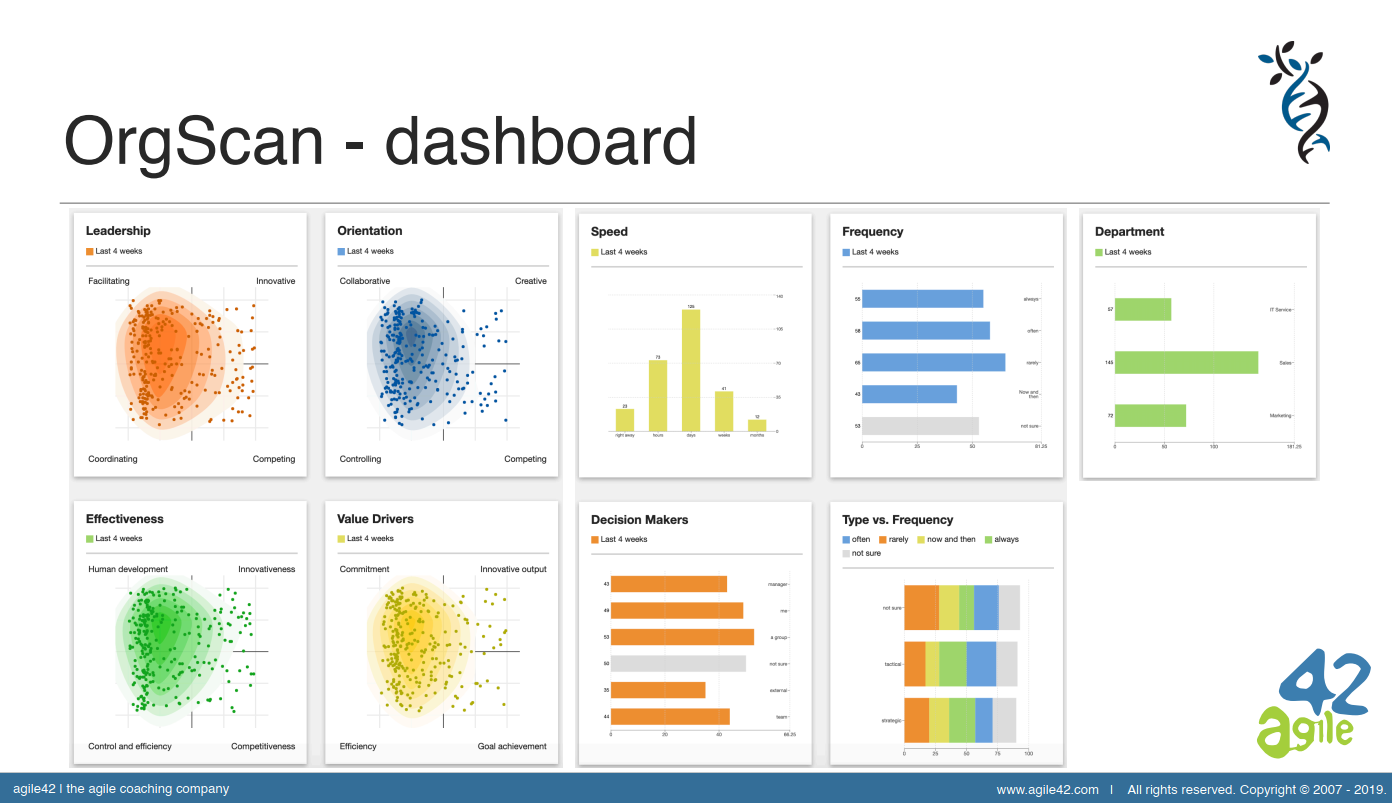
Key takeaways
- Organizational change is not a complicated problem where you can analyze and predict your way towards success but a complex one where you need to validate your ideas and assumptions, learn and adjust along the way
- Focusing on organizational culture is essential to ensuring the success of your change efforts
- Ability to continuously change and adapt needs to become a capability of the organization
- Learn how to use an empirical approach with fast cycles of learning through inspection and adaptation to drive changes
- OrgScan helps you to understand your organizational culture, increase transparency, continuously track the impact of your actions and make more informed decisions about the next steps towards your goals by providing a real picture of what is actually happening in the organization and how it operates
I feel the need… the need for speed change
In today’s VUCA world where nothing ever stays the same, the ability to continuously change and adapt to new circumstances becomes a necessity for a lot of organizations.
Working as an agile coach and helping various organizations to become more agile for some years now, I have observed some patterns which are repeating themselves – when faced with a need to change, the dominant approach is to design the solution, a static blueprint for the desired end state and a “new organization”, develop a plan to execute, run a project to implement the change and we’re done.
While this is certainly one way to approach the problem, it usually is not the best one we can use. There are a number of issues with that kind of mindset and approach, but here I want to focus on a few which I find most important.
Organizational change is a complex problem
When dealing with organizational change, such as an agile transition, we hopefully start with an understanding of the problem to solve or a goal we wish to accomplish. We don’t change for the sake of the change, we want it to make a positive impact. Thinking that we can figure out upfront and know exactly what we need to do to achieve that impact is wishful thinking and is diminishing our chances for success.

Cynefin sense-making framework – understanding the context and choosing the appropriate approach
Change is not a complicated problem where you can analyze and predict your way towards success but a complex one where you need to validate your ideas and assumptions, learn and adjust along the way. We can’t know the path before us because we never took it, we need to embark on that journey and figure out our next steps based on where we are and where we want to go.
Organizations are not machines, culture is essential
Focusing on the mechanics and seeing organizations only as machines with structures, processes, roles and responsibilities is a narrow view that neglects an important fact that organizations are made of intertwined networks of people. These people’s actions and behaviors are guided by their values, beliefs and experiences acquired within the organization, in other words an organizational culture, and changing the mechanics without taking into account the human aspect is like driving with your eyes closed.
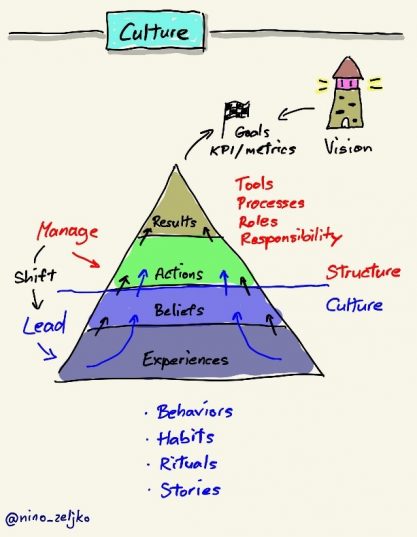
The Results Pyramid® – tending to culture is essential to achieving the results
Failing at change initiatives by just copying the tools and practices without focusing on culture is a lesson we learned too many times and is especially important when it comes to agile transitions which, by themselves, represent a change in mindset and culture.
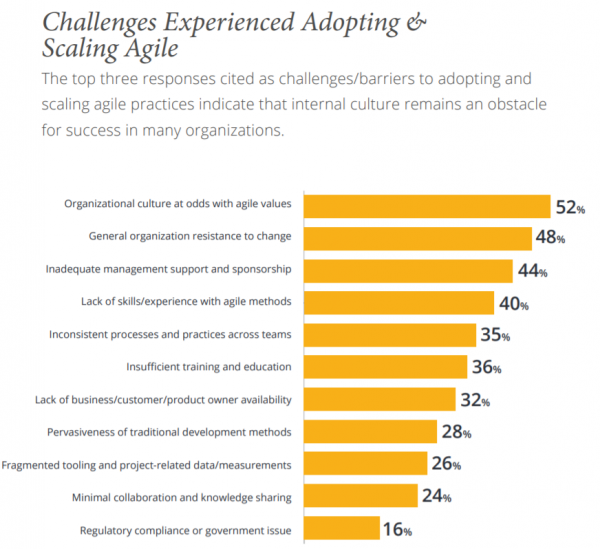
VersionOne State of Agile Report 2019 – importance of culture
It’s not about the change, it’s about the change
Another aspect which is often overlooked is that, in today’s VUCA world, learning how to change is even more important than the change itself. We will never get to an end state where we are “Done”, instead we need to learn how to continuously evolve and improve, therefore being able to change needs to become a capability of the organization in order to succeed and survive.
As the famous proverb says: “Give a man a fish and he will eat for a day. Teach a man how to fish and you feed him for a lifetime.”
Agile approach
Viewing the world in this way and the thinking behind it is of course what Agile is about. We understand that, when facing complex problems and working with complex systems, we need to use an empirical approach based on observations and fast cycles of learning through inspection and adaptation to better understand the impact we are making, the situation at hand and adjust our actions according to that learning.

Unlike a plan driven approach, an empirical approach is based on acquiring knowledge through cycles of inspection and adaptation
In order to be able to observe and learn, we need transparency of the system, not only by making it more visible but also by finding ways to understand it better.
Understanding your organizational culture with OrgScan
One very useful way of increasing transparency, understanding the organizational culture and tracking the impact of our actions during a change initiative is by using OrgScan. Organizational Scan ™ (OrgScan) is a unique tool developed by our partners agile42 in partnership with Cognitive Edge, the leading research and development company in the area of understanding complex adaptive systems.
OrgScan collects stories from employees about decisions made in the organization which have an impact on them, how they feel about those decisions, their perception and interpretation of the context in which they are made and various other information which is used to effectively assess the organizational culture.

Various information collected while capturing a story in OrgScan
The tool is strongly based on anonymity in order to provide a real picture of what is actually happening in the organization and how it operates. The data are aggregated to reveal patterns which enable us to see “the way we do things around here”, apart from our biases, assumptions and gut feeling, providing us a with a better and more realistic view of the organizational culture which is essential in driving the change efforts.
Using OrgScan we can see various information along with the relationships between them like the speed of decision making, what kind of decisions are made and by whom, how often they are made and how, what kind of compromises are being made and what values are driving them, what is the communication like, how risk influences decision making, what kind of leadership is lived in the organization and what are the approaches used, what influences employee satisfaction, etc.
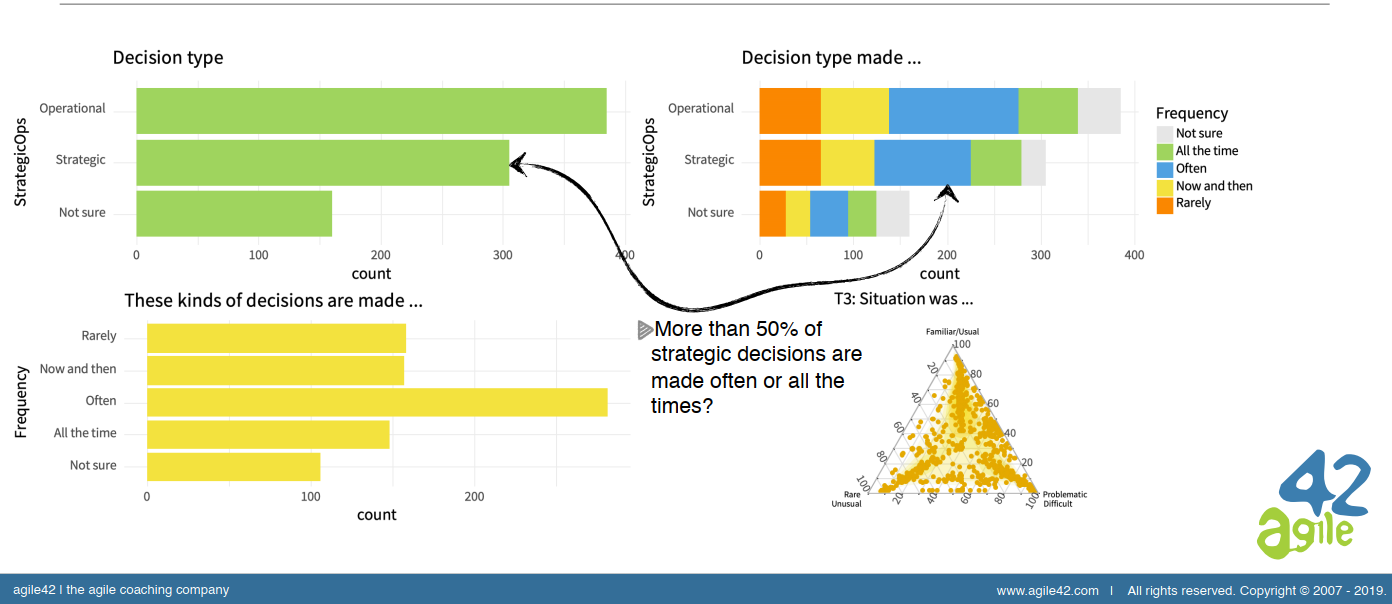
Example of connecting the data – relationship between type of decisions, frequency and situation
The initial phase of capturing stories usually takes from one to two months. During that period we want to collect as many stories as we can. It is usually enough for everyone to capture 1-3 stories per week and it takes around five minutes to enter a story.
Usage of OrgScan
OrgScan can be used to make a snapshot of an organizational culture at certain intervals or continuously to provide even shorter feedback loops where you can track and measure in real time the impact of your actions while driving the change. This tracking enables you to amplify successful changes, or dampen down changes that have unwanted side effects.

Culture information in OrgScan is expressed using the language of the Competing Values Framework
The comprehensive data are used to analyze, interpret and validate the assumptions and learning, identify areas to focus on and make more informed decisions about the next steps towards desired goals and outcomes.
For example, a common pattern, especially in strongly hierarchical organizations, is that when teams start doing Scrum, work tends to get done much faster because of reduced waiting times in a cross-functional team and an improved way of working in general. But that doesn’t mean teams automatically start delivering more value because in these types of cultures, teams usually don’t have enough autonomy and the decision making remains outside of the team, slowing them down. OrgScan shows this very clearly and enables us to focus and drive our efforts towards faster decision making by incrementally increasing the autonomy of the teams.
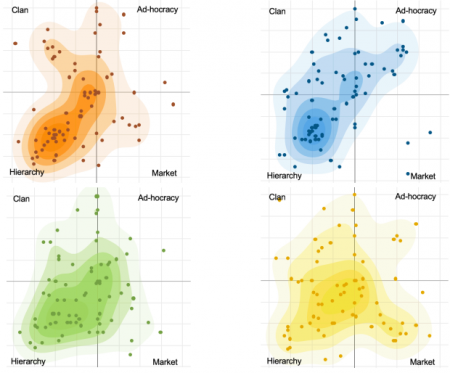
Organizational culture is measured across four dimensions: Leader Type, Orientation, Theory of Effectiveness and Value Drivers
Conclusion
To increase your chances of success when undertaking an organizational change, learn how to use the empirical approach to continuously inspect and adapt, use tools like OrgScan to understand and focus on the culture of your organization, increase transparency and make better decisions during the journey towards your goals. Introduce changes incrementally, track their impact, iterate and improve…
If you need help or you are interested in learning more, feel free to contact us.
Additional resources:
Falls Sie Fragen haben, sind wir nur einen Klick entfernt.


